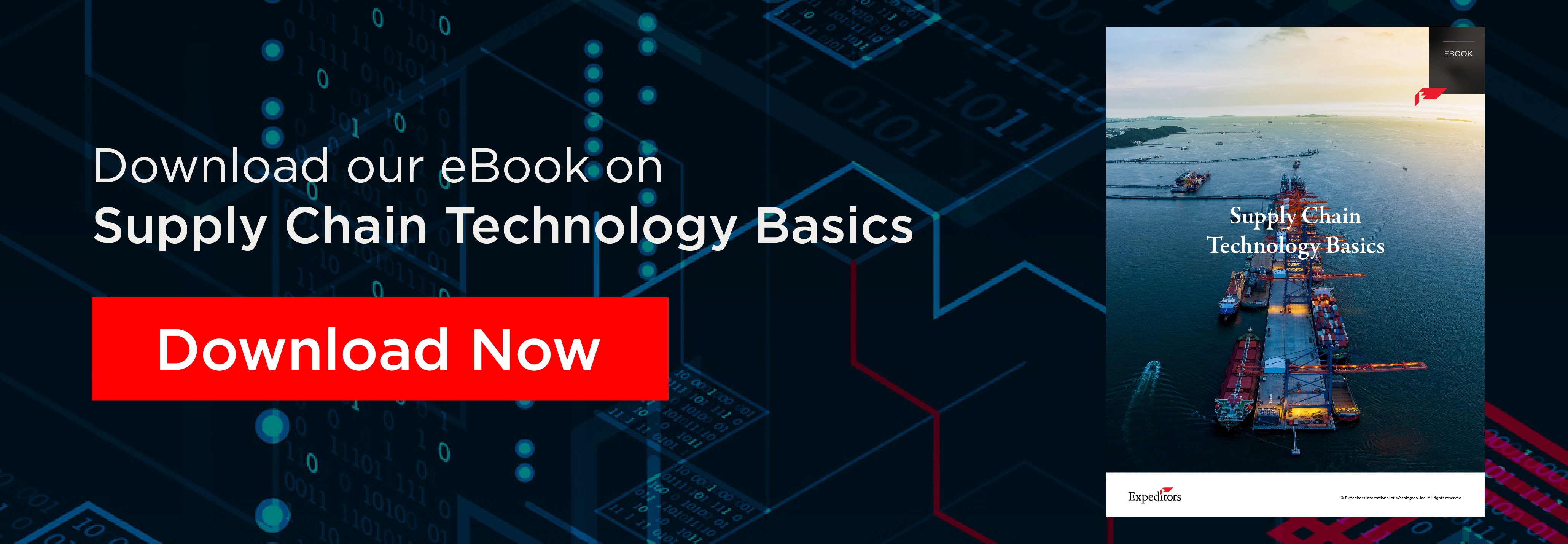
A recent Horizon blog post about supply chain technology pointed out that “by taking advantage of these technologies, retailers can improve their bottom line while also providing a better customer experience.” Who wouldn’t want to improve their bottom line and provide a better customer experience, whether a retailer or anyone else in the supply chain?
If you’re evaluating whether it’s time for your business to invest in supply chain technologies, or if you are tasked with using those tools, and you need to know where to start, our Supply Chain Technology Basics eBook is for you. Or perhaps you’re well-versed in supply chain management or business technology, but not necessarily how they work together, then this eBook is for you, too.
Working with customers over many years who rely on various supply chain technologies, and our own firsthand experience has taught us a lot about the benefits of the myriad tools and capabilities that exist in the market. We’re also keenly aware of how challenging it can be for our customers to navigate and make sense of these technologies to ultimately determine which tools can accomplish their “jobs to be done.”
Here are a few of the things we’ve found:
- There is an almost infinite array of technologies available, both general capabilities and tools for specific functions. Determining which technologies will actually help, and which won’t, is a formidable task. Frequently the technology provider’s marketing materials can leave you with more questions than answers about what the tool does.
- Technologies, even trendy ones, are not a silver bullet. They are only beneficial if they help you get your job done. To make sense of the range of tools available, first, you must understand the job to be done, and then ask whether technology can help you get it done better, faster, or cheaper. If it can’t, then you should move on.
- The tech marketplace is full of jargon, acronyms, and terminology that make it harder to know what each tool does and how it can help you, all the more so for new and emerging technologies than existing ones. To become familiar with technology and have meaningful conversations with vendors and business partners, you must be able to demystify the language.
The Supply Chain Technology Basics eBook will help you cut through the marketing jargon, identify the core function of a technology tool, and connect it with a phase of the supply chain that you want to manage better. It gives you a survey of major technologies so you can quickly grasp the purpose, features, and benefits of the topic(s) that interest you the most right now. It will give you a basic understanding of what each kind of tech is and does, in a digestible and easy-to-read format.
This eBook won’t make you an expert on supply chain technology, but it will enable you to focus further research into specific tools that seem promising and to have useful conversations with the vendors of those tools, as well as other business partners.
In the end, we want you to be successful in managing your business. One of the ways we can do that is to help you find the right technology tools, implement them, and then use them in partnership with us and your other logistics service providers. Supply Chain Technology Basics is the first step in that journey.




